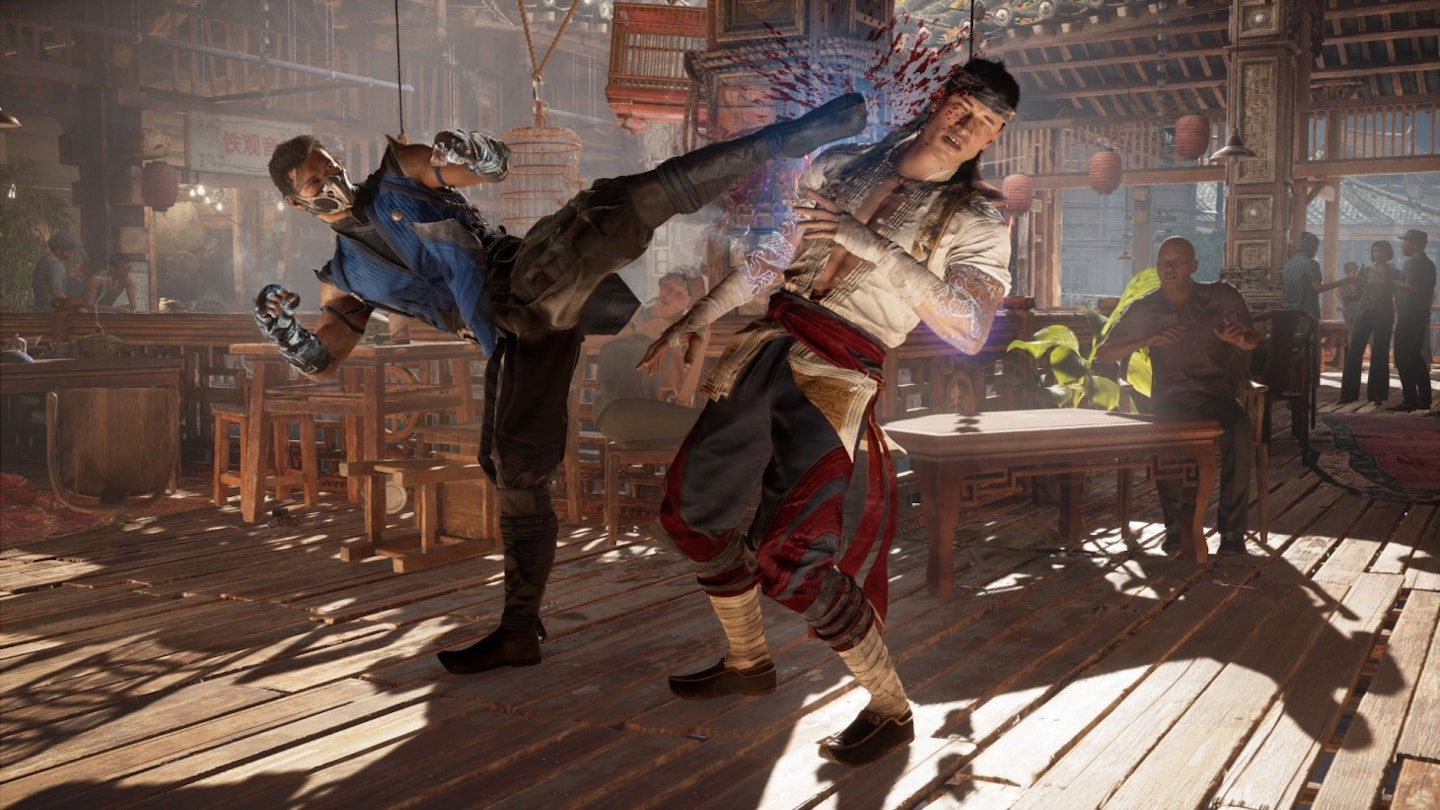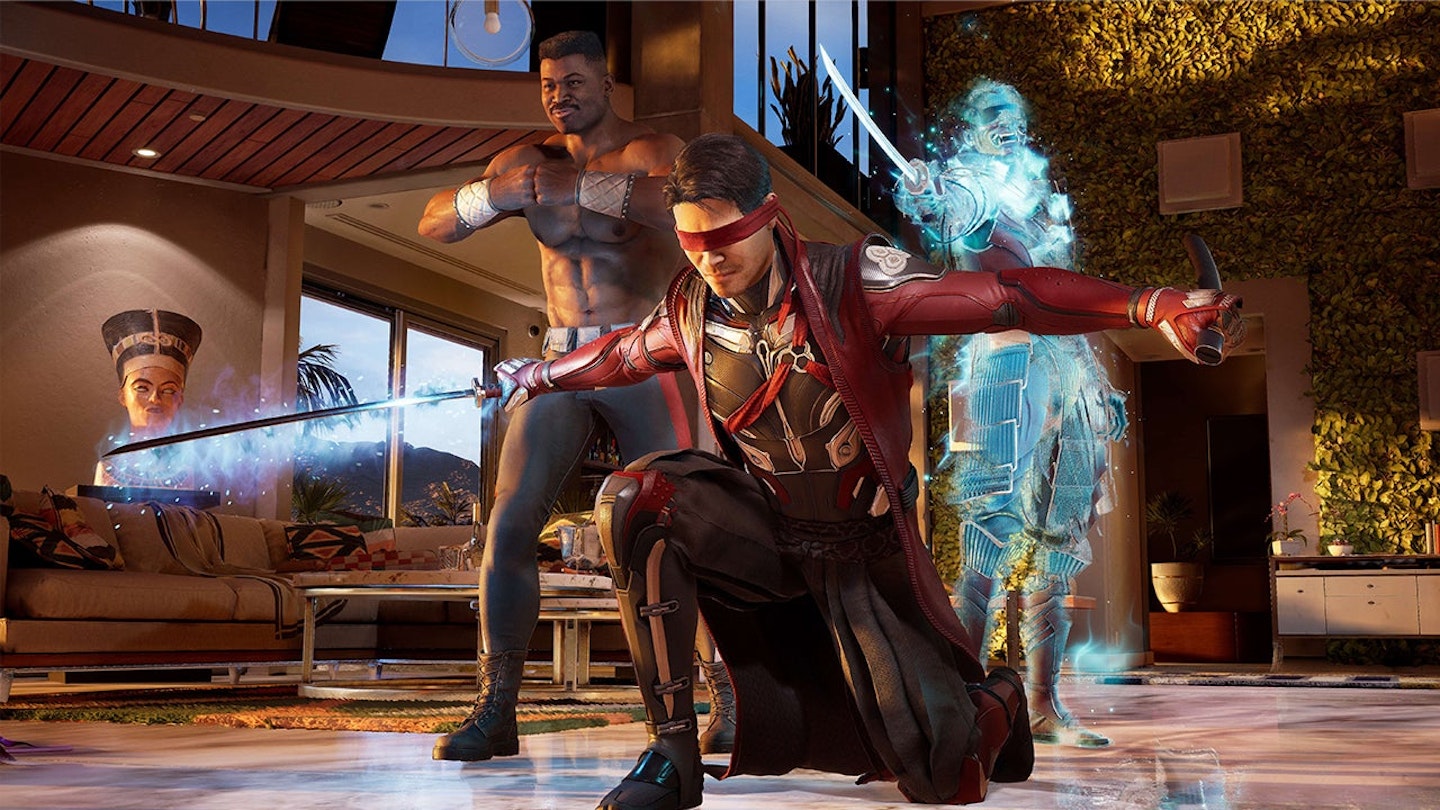Platforms: Xbox Series X|S, PS5, PC, Nintendo Switch
Mortal Kombat has always been a ludicrous series, from its cartoonishly over-the-top violence to its bewilderingly deep lore for a fighting game, full of interdimensional rivalries and superpowered martial arts, elder gods and demon magic, military special ops squads and international terrorists. That's part of the series' charm — it's a heady melange of contradictory ideas excitably thrown together, somehow working in combination when they really shouldn't.
Yet even in a series that prides itself on not making much sense, there's a fair bit here to raise an eyebrow at — but weirdly, not at the story. Rather, the game's name, which is nonsense. Despite being intended to mark it as a reboot of the series, "Mortal Kombat 1" immediately makes developer NetherRealm's latest confusing to discuss, easily confused with 1992's original game, either 1995's or 2021's movies, or the 2011 game, all simply titled *Mortal Kombat*. Worse, its purpose feels like a repeat of ideas the series has already explored. That 2011 entry was already a reboot of the timeline, and now MK1 resets its continuity once more.

However, everything's a bit bigger and bolder with this latest rejig of the universe. Reality has been rewritten from the ground up by Liu Kang, once a humble warrior monk, now elevated to a Fire God in the wake of the previous game, Mortal Kombat 11 (making the numbering of the last few entries X, 11, then 1 — clearly adhering the the Fast And Furious school of nomenclature). This allows for both some unexpected twists to familiar characters — the new relationship between series stalwarts Sub-Zero and Scorpion, for instance, or swapping former Elder God Raiden into Liu Kang's old human role — and the opportunity to massage some bits of the previous backstory into more sensible, narratively consistent forms.
Elsewhere, characters who were little more than a cool visual before — such as fang-mouthed Baraka or lizard ninja Reptile — get much greater development in the new timeline. Over the course of one of the beefiest and most cinematic story modes the series has ever offered (literally so, with a lengthy chapter re-introducing faded action star Johnny Cage that plays out as an extended Indiana Jones homage), it's choices like these that help Mortal Kombat 1 make the case for a fresh start to the story, especially with one major twist we won't spoil here. Yet there's a strange sadness to it all too, that no matter Liu Kang's intentions, the cycles of violence that permeated the old reality prove inescapable in his new one.
Mortal Kombat 1 is in the odd position of being a multiplayer fighting game that's better suited to single players.
It's a sadness mirrored in the mechanics of the game too, which despite some big ideas and clever adjustments to mix things up, doesn't feel like a significant evolution. At its most rudimentary, kombat is all about five buttons: front punch and kick, rear punch and kick, and block. This makes the basic combat system easy to pick up, before you start working in more complex aspects such as air combos or Fatal Blows. However, even at tougher difficulty levels, it's all too possible to button-mash your way through the single player mode. For those who do want to learn the specifics, there's at least a competent set of tutorials, useful to train total newcomers and to educate returning players on changes made here, and, like the recent *Street Fighter 6*, there are a few modifications available to make the game more accessible, such as optionally simpler combo strings and easier special moves, which is great to see.
While its familiar one-on-one battles still evoke the best of the series, it's the new Kameo system that most stands out. This is essentially an assist system, where a non-active character can dart in and deal some damage to your opponent, but it's elevated to a tactical high here. There's a real art in balancing your actively controlled fighter with a Kameo character (kharakter?) who can plug gaps in their moveset. For instance, if you're playing as Baraka, who doesn't really have much in the way of low attacks when he's in the midst of a combo, choosing a Kameo fighter who does have low-hitting moves means you can string together moves in ways that afford you more control over a match.

Crucially, Kameo pairings aren't tag teams — there's a gauge to fill before you can call on your partner, and your opponent can still dodge or deflect them when they run on screen — so canny usage remains a matter of skill. Still, with 22 warriors in the game's base roster — 23 for those who pre-ordered and got nefarious sorcerer Shang Tsung as a bonus — and more than a dozen Kameo fighters, there's plenty of combinations to experiment with in order to find a match that works for your preferred play style.
Kameos also serve to mix up the aforementioned Fatal Blow system, introduced in Mortal Kombat 11. As in that game, these powerful, tide-turning moves can only be executed when your fighter's health is below 30 percent, but are now team-up moves with your Kameo partner. They're also extraordinarily gruesome, bringing back the slo-mo X-ray effects last seen in Mortal Kombat X when they connect — think close ups of icicles skewering internal organs, or skulls crushed to bone fragments. Short of the series' signature Fatalities, Fatal Blows are the goriest moments in the game.
Solo players also have the new Invasion mode to contend with. Well, "new" is perhaps charitable — this feels like a mash-up of previous bonus modes from earlier games, taking loot grinding and RPG-lite elements from the Konquest or Krypt features of past entries, and repackaging them in some sort of hyper-violent Mario Party. You'll move a fighter around a fancy board game layout, with each square you land on having a battle or challenge to overcome, earning you in-game rewards such as concept art or variant colour palettes for your trouble. It all feels a bit basic at present, with repetitive tasks and too-easy fights, but Invasion is set to be something of a live service, running in seasons — future updates are set to focus on different aspects of the world or lore, so hopefully this will keep the game fresh and allow space for it to grow and evolve.
Unfortunately, those seeking to test their might online against other players aren't quite so well catered for. At time of writing, server stability is best described as "wobbly", and there's no crossplay between players on different formats (though this is planned further down the line). Matchmaking seems competent at least, usually pitting you against rivals of comparable skill, but if the fight crashes mid-bout anyway, it doesn't matter much.
It's a big downside to what otherwise stands as one of the better chapters in Mortal Kombat history — even if that history has been re-written by a former monk turned Fire God. It puts Mortal Kombat 1 in the odd position of being a multiplayer fighting game that's better suited to single players, or at least those able to partake in local versus play. Hopefully, if online stability improves, it'll feel more essential than it does at launch.
